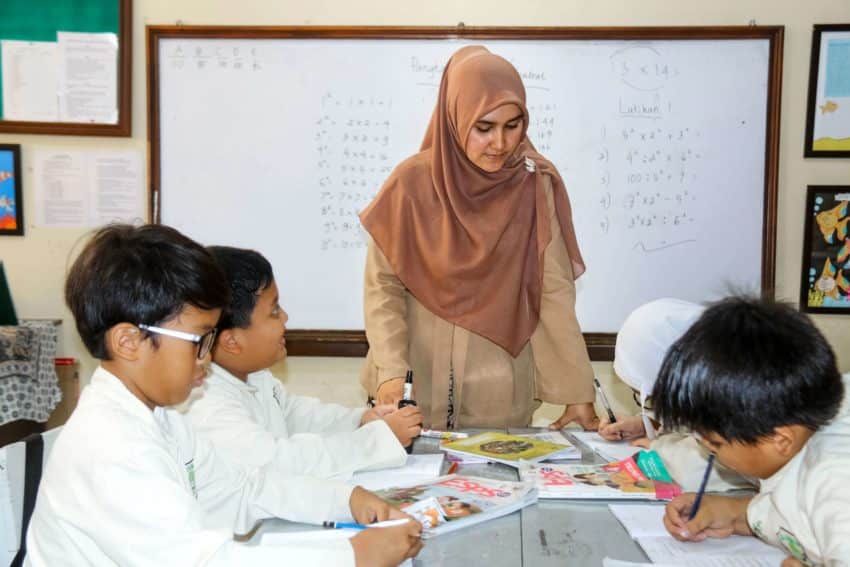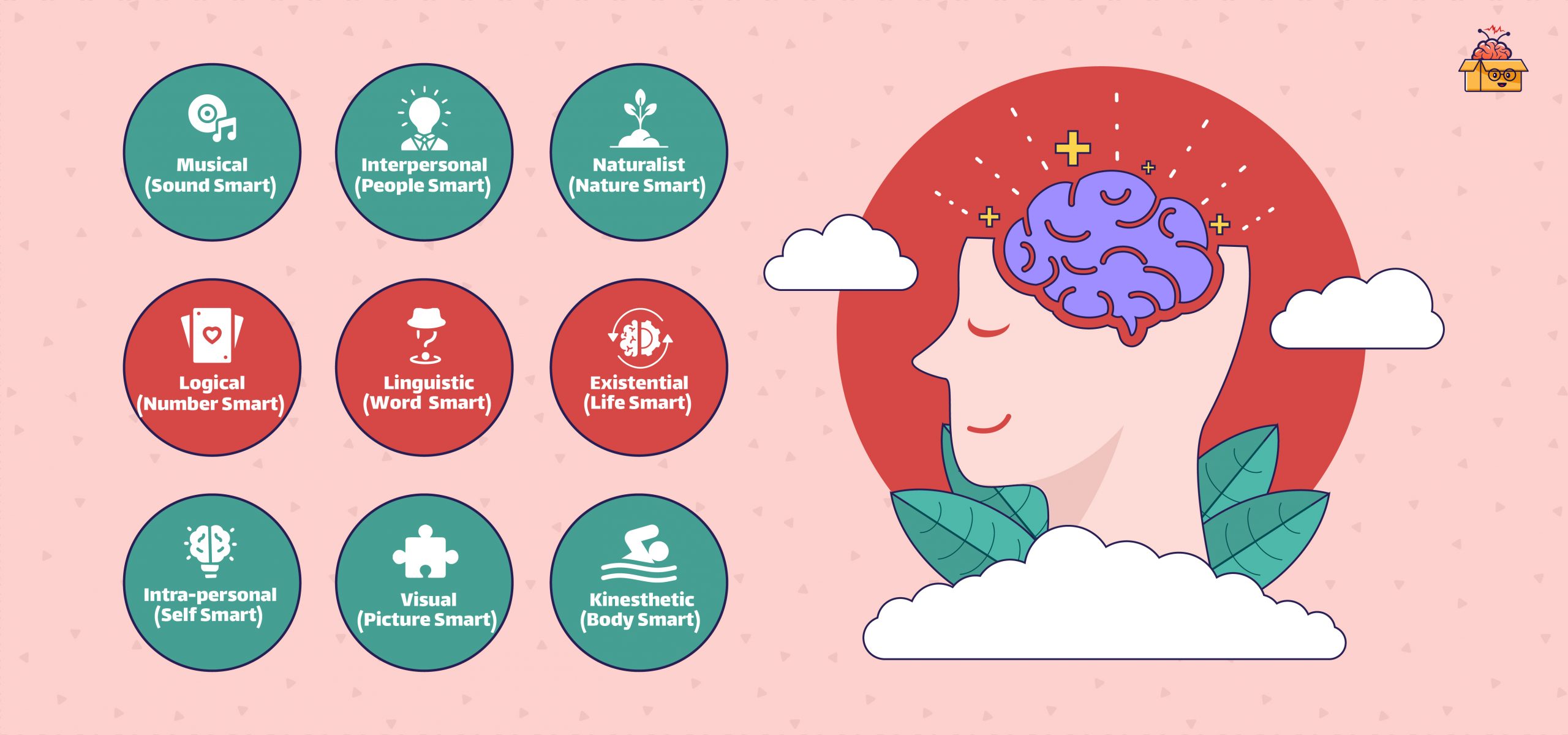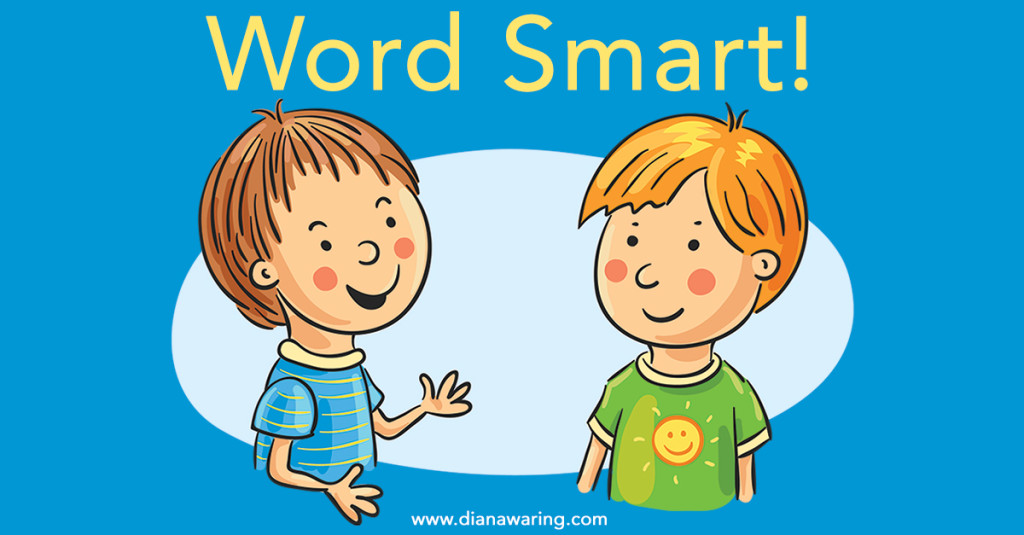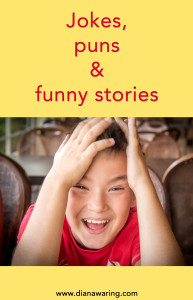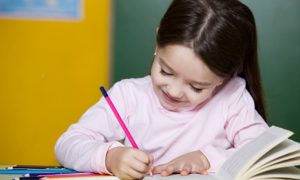
Parents and extracurricular mentors that “think” like your child can help them start to approach school in general from a narrational tact. For instance, telling a child who enjoys using their linguistic multiple intelligence «mind muscles» the story of how a plant goes from seed to germination to shoot to leaves to fruiting and, once again, to seeding can help them better understand botany in a context that comes naturally to them.
Recommended Extracurriculars for Word Smart Kids
Acting, debate, creative writing, poetry, language classes help kids with an interest in the linguistic multiple intelligence to develop this innate strength.
This being said, each person has the ability to develop all eight multiple intelligences so even if your child is strong in the linguistic multiple intelligence department, don’t fall into the trap of focusing all of your energies in one area and excluding the others. Rather, use your child’s innate multiple intelligence preferences (most likely more than solely language!) to approach challenges they may be having in weaker areas so that you can more effectively nurture a «whole» child.
Be sure to get a feel for how your child feels about a class you’ve selected for them by tuning into their spirit before and after class. They should have incredible energy, a positive attitude, a «present» focus (living in the moment), and a high level of self-esteem when talking about the class. If the class is not a good match for them, you’ll find more than just a resistance to go…your child will be irritable, make physical complaints or be asocial. They’ll drag their feet to go and be the first one out the door after the class is finished. If the teacher will allow it, it’s a great idea to audit the class with your child prior to enrolling—and pay attention to more than just what happens in the class…be aware of how your child is feeling and acting both before and after it.
Browse Activities to Develop Word Smarts →
Learn More About Why We Think MI Development is Crucial →
How Word Smart Is Your Child?
By learning more about both learning and play behaviors of your children with regard to their multiple intelligence preferences, you will be better able to teach and parent in a way that celebrates and embraces your child’s personality type, multiple intelligences and learning style, as well as help teachers, tutors and mentors understand how to make your unique child’s seeds of potential blossom. Take our award-winning preference profile and unlock the keys to your child’s potential now!
References
Descriptions of each MI type have been excerpted from Wikipedia definitions.
Recommendations for difference in approach to subjects your child finds challenging in a traditional curriculum: Gardner, et. Al.,Multiple Intelligences: New Horizons in Theory and Practice. (2006). Basic Books.
Extracurricular recommendations have been extrapolated from Thomas Armstrong’s large body of work, specifically In Their Own Way. (2000). New York: Penguin Putnam.
Did you know that each person has unique intelligence and that we thrive in certain learning environments while struggling in others? There are eight different types of intelligence, as put forth by Howard Gardner. People can have varying levels of intelligence, and they can change over time. Teachers can use multiple intelligences in the classroom for the benefit of their students by customizing lessons, classroom layouts, and assignments for these multiple intelligences.
Keep reading to find out about all eight bits of intelligence, how to implement multiple intelligences in the classroom, and how to benefit from them.
What is the Multiple Intelligences Theory?
The Multiple Intelligences Theory throws away the idea that intelligence is one sort of general ability and argues that there are actually eight types of intelligence. One is not more important than the other, but some may help people succeed at different things.
For example, a person with high musical intelligence and low visual-spatial intelligence may succeed in music class but may struggle in art class.
Howard Gardner’s Theory of Multiple Intelligence
Howard Gardner of Harvard University first came up with the theory of multiple intelligences in 1983. Gardner argues that there are eight types of intelligence, far more than the standard I.Q. test can account for.
He goes on to say that these multiple intelligences “challenge an educational system that assumes that everyone can learn the same materials in the same way and that a uniform, universal measure suffices to test student learning.”
Gardner argues that schools and teachers should teach in a way that supports all types of intelligence, not just the traditional ones such as linguistic and logical intelligence.
The Eight bits of Intelligence
1. Linguistic Intelligence (“word smart”)
2. Logical-Mathematical Intelligence (“number/reasoning smart”)
3. Visual-Spatial Intelligence (“picture smart”)
4. Bodily-Kinesthetic Intelligence (“body smart”)
5. Musical Intelligence (“music smart”)
6. Interpersonal Intelligence (“people smart”)
7. Intrapersonal Intelligence (“self smart”)
8. Naturalist Intelligence (“nature smart”)
Linguistic Intelligence
Photo by Patrick Tomasso on Unsplash
Linguistic intelligence, also called verbal-linguistic intelligence, is about knowledge of language use, production, and possibilities.
Those with this type of intelligence have the ability to use language to express themselves and assign meaning by way of poetry, humor, stories, and metaphors. It is common for comedians, public speakers, and writers to be high in linguistic intelligence.
Teaching for Linguistic Intelligence:
Use the following activities and techniques for students and groups with high linguistic intelligence:
- Use creative writing activities such as poetry or scriptwriting
- Set up class debates
- Allow for formal speaking opportunities
- Use humor, such as joke writing or telling
- Make sure there are plenty of reading opportunities
Learning with Linguistic Intelligence:
Learn your best by writing, practicing speeches, creating jokes, journaling, and reading.
Logical-Mathematical Intelligence
Photo by Yancy Min on Unsplash
Logical-mathematical intelligence is commonly thought of as “scientific thinking,” or the ability to reason, work with abstract symbols, recognize patterns, and see connections between separate pieces of information. It makes it possible to go through the scientific process of calculating, quantifying, hypothesizing, and concluding.
This type of intelligence is high in scientists, mathematicians, computer programmers, lawyers, and accountants.
Teaching for Logical-Mathematical Intelligence:
Use the following activities and techniques for students and groups with high logical-mathematical intelligence:
- Provide opportunities for problem-solving
- Involve calculations
- Create activities that involve deciphering a code
- Use pattern or logic games
- Organize new information in an outline format
Learning with Logical-Mathematical Intelligence:
Learn your best by creating information outlines with points, and making patterns of the information.
Visual-Spatial Intelligence
Photo by Matthieu Comoy on Unsplash
Visual-spatial intelligence is all about the visual arts, graphics, and architecture. This type of intelligence allows people to visualize objects from different perspectives and in different ways, use objects within space, form mental images, and think in three-dimensions.
People high in visual-spatial intelligence include painters, architects, graphic designers, pilots, and sailors.
Teaching for Visual-Spatial Intelligence:
Use the following activities and techniques for students and groups with high visual-spatial intelligence:
- Use mind mapping techniques
- Use guided visualizations or verbal imagery
- Provide opportunities for artistic expression using a variety of mediums (paint, clay, etc.)
- Allow for make-believe or fantasy
- Create collages for visual representations
Learning with Visual-Spatial Intelligence:
Learn your best by creating something visual using space such as a collage, art piece, or written map of the information.
Bodily-Kinesthetic Intelligence
Photo by Drew Graham on Unsplash
Bodily-kinesthetic intelligence is the ability to use the body to express emotion, play games, or create new products. It is commonly referred to as “learning by doing.” This type of intelligence enables people to manipulate objects and the body.
High bodily-kinesthetic intelligence is common in dancers, athletes, surgeons and artisans.
Teaching for Bodily-Kinesthetic Intelligence:
Use the following activities and techniques for students and groups with high bodily-kinesthetic intelligence:
- Use body sculpture
- Use of role-playing, miming, or charade games
- Allow for physical exercise, dance, or martial arts
- Create opportunities for dramatic arts such as skits
- Use human graphs
Learning with Bodily-Kinesthetic Intelligence:
To learn at your best, try creating a movement routine or role-play to learn a concept or remember information.
Musical Intelligence
Photo by Michael Maasen on Unsplash
Musical intelligence is all about music. Individuals with high musical intelligence have a greater knowledge of and sensitivity to tone, rhythm, pitch, and melody. But this type of intelligence isn’t just about music — it’s also about sensitivity to the human voice, audio patterns, and sounds in the environment.
Composers, musicians, conductors, and sound directors all have high musical intelligence.
Teaching for Musical Intelligence:
Use the following activities and techniques for students and groups with high musical intelligence:
- Use instruments and instrument sounds
- Use environmental sounds to illustrate a concept
- Allow for musical composition and performance
- Allow students to create songs about a topic
Learning with Musical Intelligence:
To learn best with your musical intelligence, try making a song with content you need to know.
Interpersonal Intelligence
Photo by Perry Grone on Unsplash
Interpersonal intelligence is all about working with others and communicating effectively with others both verbally and nonverbally. It involves the ability to notice distinctions in others’ moods, temperaments, intentions, and motivations.
High interpersonal intelligence is often found in teachers, counselors, politicians, and religious leaders.
Teaching for Interpersonal Intelligence:
Use the following activities and techniques for students and groups with high interpersonal intelligence:
- Teach collaborative skills
- Provide plenty of group work opportunities
- Use person-person communication
- Use empathy
Learning with Interpersonal Intelligence:
To learn best with high interpersonal intelligence, try doing most of your work in a group or with another person. Try to put yourself in the shoes of people or situations you are learning about.
Intrapersonal Intelligence
Photo by Doug Robichaud on Unsplash
Intrapersonal intelligence involves knowledge of the self in ways such as feelings, a range of emotional responses, and intuition about spirituality. This type of intelligence allows people to be conscious of the unconscious and to discern higher patterns of connection between things in our world.
Psychologists, philosophers, and theologists have high intrapersonal intelligence.
Teaching for Intrapersonal Intelligence:
Use the following activities and techniques for students and groups with high intrapersonal intelligence:
- Practice meditation
- Allow for plenty of self-reflection
- Use mindfulness
- Practice reaching altered states of consciousness
Learning with Intrapersonal Intelligence:
To learn best with intrapersonal intelligence, try using mindful walks, meditation, and metacognition.
Naturalist Intelligence
Photo by Sarah Brown on Unsplash
Naturalist intelligence is about discerning, comprehending, and appreciating plants, animals, the atmosphere, and the earth. It involves knowing how to care for animals, live off the land, classify species, and understand systems in nature.
High naturalist intelligence is seen in farmers, zookeepers, botanists, nature guides, veterinarians, cooks, and landscapers/gardeners.
Teaching for Naturalist Intelligence:
Use the following activities and techniques for students and groups with high naturalist intelligence:
- Practice conservation
- Have a classroom plant or animals to care of
- Observe nature, go on nature walks
- Use species classification
- Provide hands-on labs of natural materials
Learning with Naturalist Intelligence:
To learn at your best, do your learning outdoors. Work with natural materials or animals as much as possible to work through concepts.
Educational Benefits of Applying Multiple Intelligences Theory
The benefits of this theory are many, and they can be applied across all ages and in all subjects. Students who are given ways to learn and perform at their best are more likely to enjoy school and are more likely to succeed academically.
Planning With Intelligence:
Variation Approach: When students are first made aware of the types of intelligence, they must complete activities of all types to better select their intelligence types.
Choice Approach: Students can be given the option to complete some activities of a long list of activities suited for different types of intelligence.
Bridge Approach: If most or all of the students in a classroom or group are high in the same type of intelligence, activity or classroom layout can be focused on that one type.
What Multiple Intelligences Theory Can Teach Us:
Additional research may be needed in order to understand the best possible methods to assess and support a range of intelligence in the classroom. For now, the theory has already taught students, teachers, parents, and administrators to broaden their definition of intelligence and to include all types in the equation.
Multiple Intelligences in the Classroom:
There are many ways to use the theory of multiple intelligences in the classroom.
How can Multiple Intelligences be Implemented in the Classroom?
Classroom Layout
The best way to layout a classroom to support multiple intelligences is to have places in the room that works for each type of intelligence.
For linguistic intelligence, there should be a quiet area for reading, writing, and practicing speeches.
For logical-mathematical intelligence, there should be an area where students can conduct scientific experiments.
For visual-spatial intelligence, include an open area for object manipulation or art creation.
For bodily-kinesthetic intelligences, an open area for body movement could be provided.
For musical intelligence, including a separate area for music listening and creating, perhaps with soundproofing or headphones.
For naturalistic intelligence, outdoor space or indoor aquarium or terrarium could be provided.
For interpersonal intelligence, there should be an area with large tables for group work, while for intrapersonal intelligence there should be areas for individual activities.
How to Identify the Intelligence in Your Classroom
It can be hard to identify which intelligences are in the classroom. Observation and working together with the students to understand what is working for them is key. University of the People offers a Master’s in Education, where you are taught to identify the types of intelligence and how to implement them.
Expand Upon Traditional Activities:
Traditional activities in the classroom tend to focus on linguistic and logical-mathematical types of intelligence. These should be expanded to include other types of intelligence as well. For example, teachers can use debate to teach logic or use clay manipulatives for math learning.
Results of This Program:
When multiple intelligences theory is implemented properly in the classroom, it can have very positive results. Students develop an increased sense of responsibility, self-direction, and independence, discipline problems are reduced, students develop and apply new skills, cooperative learning skills increase, and overall academic achievement increases.
The Teacher’s Role:
Photo by Rio Lecatompessy on Unsplash
The teacher’s role is extremely important in making sure students get the most out of multiple intelligences theory in the classroom. Teachers should work with the students, rather than for the students, to develop the best activities, projects, and layouts. Teachers should continuously observe students’ interests and successes in different areas and continually change the classroom layout and plan accordingly.
Teaching in the Way the Child Learns:
Teaching using the multiple intelligence theory is essentially teaching in the way the child learns. It involves giving up long-held traditional beliefs about how to teach and instead puts the child first at the center of the planning.
Factors In Educational Reform
According to Gardner, there are four factors in educational reform: assessment, curriculum, teacher education, and community participation.
Gardner argues that in addition to using multiple intelligences, educational reform should occur within the following:
- Assessment: Children should be assessed according to their learning styles and intelligence, and traditional forms of assessment should not be used to drive instruction.
- Curriculum: Curriculum has traditionally been unchanged, and no one seems to know why. Curriculums should shift to focus on skill development and knowledge formation.
- Teacher Education: There must be a way to attract more talented teachers into the profession, keep them there, and incentivize them to use research-backed methods.
- Community Participation: Children and adolescents don’t stop learning at 3:00 pm. The entire community must be committed and involved in the education of young society members.
Challenges of Multiple Intelligences Theory
Accommodating so many different bits of intelligence within the classroom is difficult, and some intelligence may not lend themselves well to group learning situations.
Teachers should still try to incorporate as many as possible and give students the opportunity to use their intelligence types at least some of the time if all the time is not feasible.
The Difference Between Multiple Intelligences and Learning Styles
Multiple intelligences and learning styles are commonly confused with one another, but they are not the same.
Multiple intelligences represent different intellectual abilities and strengths, whereas learning styles are about how an individual may approach a task. Learning styles are fluid, and may not correlate completely to the intelligence type.
Conclusion
As a teacher, it is important to use multiple intelligences in the classroom, but first, you must understand the multiple intelligence theory and know which intelligences your students have to be able to teach them in the best way possible.
As a student, it is important to know which intelligences you have so you know the most effective way to learn.
Hopefully, you now have a better understanding of what the multiple intelligences are and how you can use them to your benefit to help both yourself and others learn better and faster than ever before.
“Intelligent” — just take a few moments to soak this word in, and tell me what comes to your mind.
A nerdy scientist wearing big black nerd glass? A mathematician relentlessly solving theorems on a blackboard? Albert Einstein?
Well, if you connotate intelligence with such images, it’s because we are beaten down to believing that intelligence is a single cognitive ability that’s related to logic, mathematics, or sometimes language.
But Howard Gardner, a development psychologist, challenged this notion with the theory of multiple intelligences.
He introduced eight different types of intelligences and broadened the old notion associating it with a single criterion. He proposed eight different kinds of intelligences:
- Linguistic (word smart)
- Visual-Spatial (picture smart)
- Logical-mathematical (number/reasoning smart)
- Bodily-kinesthetic (body smart)
- Musical (sound smart)
- Interpersonal Intelligence (people smart)
- Intrapersonal Intelligence (self smart)
- Naturalist Intelligence (nature smart)
What other scientists and psychologists considered mere talents or soft skills, Gardner presented them as intelligences. And it makes some real sense: If the ability to solve a complex math problem is intelligence then why not understanding people, music, or nature? Even that’s intelligence but just of a different kind.
This article walks you through this widely discussed and hailed theory. We’ll understand what is multiple intelligence, some criticism and myths about the theory, and each multiple intelligence in detail.
Sounds like a plan? Let’s dive in.
What’s the Theory of Multiple Intelligences?
Howard Gardner first introduced the theory of multiple intelligences in his book: Frames of Mind. He suggests that the traditional notion of intelligence is quite narrow because it considers a single criterion of human intelligence. For example, IQ tests that are popular as a measure of human intelligence mainly consider a person’s linguistic and logical-mathematical abilities. But intelligence is not just limited to it.
So Gardner proposed eight different kinds of intelligence known as multiple intelligence to demonstrate the full range of human intelligence.
(Gardner’s Theory of Multiple Intelligences)
One of the reasons Gardner’s intelligence covers a broad range is because it recognizes the creation of artifacts, music, or sculptures as an expression of intelligence. Whereas traditional theories do not consider these creations as expressions of intelligence.
“An intelligence is the ability to solve problems, or to create products, that are valued within one or more cultural settings.”
Criticism
Apart from popularity, Gardner’s theory has also faced some criticism. Many psychologists and educators argue that the different multiple intelligence stated in the theory does not represent intelligence but talent and personality traits. It’s also criticized on the basis of a lack of practical and empirical support.
Multiple Intelligences are Not Learning Styles
Regardless of the criticism, the theory is widely popular and discussed in the field of education to improve school-based practices. This also leads to often misinterpreting it as learning styles.
The primary reason to develop the theory was not to improve teaching practice but to state and recognize the different human intelligences. While multiple intelligence refers to different intellectual abilities of a person, the learning style is a way or behavior in which an individual learns.
As per Howard, learning styles — visual, auditory, kinesthetic, reading/writing, etc. — are the ways in which people approach the tasks. He describes the idea of learning style as: “a hypothesis of how an individual approaches a range of materials.”
List of Multiple Intelligences
1. Linguistic Intelligence – Word/Book Smart
Linguistic intelligence or word smart is the ability to understand words both written and spoken and effectively use them. This intelligence involves understanding language and words including idioms and wordplay and its socio-cultural nuances.
People with linguistic intelligence tend to have great skills for reading, writing and speaking, They enjoy literature, creative writing, telling stories, and even word brain games like crosswords.
Characteristics
- Ability to think in words
- Expressive complex meaning
- Enjoy reading, writing
- Remember written and spoken words
- Good at debates and speeches
Potential Profession
- Writer
- Journalist
- Lawer
- Teacher
2. Visual-Spatial Intelligence – Art/Picture Smart
Visual-spatial intelligence is the ability for visual and spatial judgment. It’s the ability to think in three dimensions, picture concepts in mind, spatial reasoning, graphic and artistic skills.
Professionals such as sculptors, artists, designers, architects exhibit great visual intelligence while pilots, sailors, navigators exhibit the ability to understand and navigate wide space — spatial intelligence. People with this kind of intelligence like to draw, paint, design, work with clay, and create patterns. They have an inclination and knack for solving visual puzzles, jigsaw puzzles, mazes, and drawing.
Characteristics
- Good at visualizing things
- Can think in images, pictures
- Good with navigating, solving jigsaws puzzles, drawing
Potential Profession
- Artist
- Designers
- Navigators
- Architect
3. Logical-Mathematical Intelligence – Number/Reasoning Smart
Logical-mathematical intelligence gives the ability to analyze and solve problems, perform calculations, recognize patterns — thoughts, numbers, visuals, etc., and carry out things with logic. People with this intelligence tend to think abstractly in patterns and concepts. They tend to apply logic, math, and numbers in different things. They are drawn towards working with numbers, solving math puzzles and love to solve complex problems.
Characteristics
- Exceptional problem-solving skills
- Good with calculations and abstract problems
- Good with analyzing situations
Potential Profession
- Mathematician
- Programmer
- Engineer
- Scientist
- Statistician
- Accountant
4. Bodily-Kinesthetic Intelligence – Body/Moment Smart
Bodily-kinesthetic intelligence is the ability of excellent motor control and physical dexterity. It provides body awareness and the mind-body union. This makes people effectively perform tasks that require skilled body actions , physical skills, and perfect timing. Athletes, dancers, actors, crafts professionals, surgeons, etc. exhibit great kinesthetic intelligence.
Characteristics
- Exceptional mind-body coordination
- Great muscle memory
- Skilled in sports and dancing
Potential Profession
- Athlete
- Dancer
- Sculpture
- Actor
- Builder
5. Musical Intelligence – Sound/Music Smart
Musical intelligence is the ability to understand, create, and reproduce sounds — pitch, rhythm, tone, timbre, etc. In the initial research of multiple intelligences, musical intelligence mostly revolved around music and rhythm. But later it was accepted as auditory-vibratory intelligence as it deals with a wide area of sound and vibrational patterns.
People with musical intelligence have an ear for music, sounds in the environment, and rhythmic patterns. This intelligence is exhibited by composers, musicians, vocalistic, etc.
Characteristics
- Discern sounds and musical pattern
- Understanding of rhythm and notes
- Can recognize and remember sound patterns and tones
Potential Profession
- Musician
- Composer
- Singer
- Conductor
6. Interpersonal Intelligence – People Smart
Interpersonal intelligence refers to intelligence and behavior when among people. It’s the intelligence to understand others and interact effectively. Hence people with interpersonal intelligence are called people smart. They have the ability to analyze the emotions, motivations, moods, and desires of people around them that helps them to manage relationships.
People with interpersonal intelligence can be easily spotted in crowds by their skills to communicate, handle social situations, and sensibility towards others.
Characteristics
- Skilled verbal and nonverbal communication
- Great at maintaining relationships
- Active listeners
- Empathetic
- Can persuade and resolve conflicts
Potential Profession
- Politician
- Teacher
- Counselor
- Salesperson
7. Intrapersonal Intelligence – Self/Introspection Smart
Intrapersonal intelligence is the ability to understand oneself, one’s own thoughts and feelings. It involves self-awareness — awareness of our inner world and belief — and using it to direct life.
Characteristics
- Excellent self-awareness
- Likes to analyze one’s thoughts and ideas
- Understands one’s motivations and feelings
- Great in analyzing one’s strengths and weaknesses
Potential Profession
- Philosopher
- Writer
- Artist
- Theorist
8. Naturalistic Intelligence
Naturalistic intelligence gives humans the sensibility to flora, fauna, and other elements of nature. It is the latest addition to multiple intelligences theory. As per Gardner, people with this intelligence are highly aware of and interested in nature, learning about different species of plants and animals and the environment.
Such people enjoy camping, hiking, gardening, and similar outdoor activities. In the past humans possessed high naturalistic intelligence as hunters, farmers, and gatherers. And even today professionals such as biologists, botanists, zoologists, farmers, and gardeners display this intelligence.
Characteristics
- Interested in botany and zoology
- Enjoy exploring nature and the outdoors
- Feels a connection with nature
Potential Profession
- Biologist
- Conservationist
- Gardener
- Farmer
Additional Multiple Intelligences
Apart from these eight intelligences, Gardner has alluded the possibility of more intelligences in his several works — such as existential intelligence, teaching-pedagogical intelligence, cooking intelligence, and humor. But these still lack to fulfill the criteria of intelligence.
Wrapping Up
Alfred Binet, the inventor of the IQ test, believed intelligence is comprehensive, and single quantitative measures such as IQ scores can not fully capture it. Gardner’s theory of multiple intelligence proves it. It is indeed a breakthrough in understanding human cognition that’s re-evaluating our understanding and concept of the complex human mind.
Before You Go —
If you’re looking for a better way to spend time on your phone and pump those brain muscles, Smart Brain is what you need. Download Now For FREE
Welcome to my homeschool blog, which offers insights into loving learning, loving your family, loving history, loving homeschooling, and enjoying your life! With your cup of coffee in hand, take a break to laugh with me, to have your heart refreshed, to be reminded of how cool your kids really are, and to consider the amazing adventure of being a homeschool mom. AND, if you are interested in the History Revealed curriculum, be sure to check out my Teaching Tips!
Do you LOVE words? Do you enjoy cuddling up in a comfy chair to “escape” with a book? Do you take delight in word games, like Scrabble and Taboo? Do you happily work crossword puzzles and word jumbles, or solve riddles and create-your-own-ending mysteries? Do you find it delightful to memorize lines for the local community theater’s Shakespeare play? Do you treasure writing out your thoughts, whether in blogs, journals, or letters to friends?
All of these are indications of someone who is Word Smart! Whether spoken or written or read or played with, words are a great joy to people with a Linguistic Intelligence. Here is an excerpt on Word Smart from my book, Reaping the Harvest:
Some of the characteristics of this intelligence are:
- enjoys reading
- strong command of the language
- enjoys creative writing
- plays with the language—puns, jokes, rhymes
- fluent memory for specific data in words (such as names)
- enjoys making up yarns
- thought patterns are verbal rather than pictures
- enjoys puzzles and games that focus on words
- likes to listen to read-aloud stories, as well as sermons, lectures, etc.
- good speller
It may not be a stretch to see how kids that are Word Smart would do well in school, since so much of what is required to succeed revolves around words:
- Listen to the teacher talk.
- Read the chapter in the book.
- Learn the vocabulary (words).
- Write the answers to the questions.
- Discuss the chapter.
- Take the written test.
It’s important to recognize that those who are gifted with this have many different ways of enjoying words. For those who love humor, the words they want to write are jokes, puns, and funny stories. While you might be expecting a serious research paper, they turn in a light-hearted, humorous look at WWII. (It happens. I know.) Then, there are those who love using words vocally: talking. . . non-stop. It can be hard to be thankful for the Linguistic Intelligence when your Word Smart child is constantly talking to you about everything under the sun!
Part of our challenge as homeschooling parents is to learn how to appreciate each of these multiple intelligences:
- Word Smart
- Body Smart
- Self Smart
- Nature Smart
- Music Smart
- Picture Smart
- People Smart
- Number Smart
Recognizing that some are not as Word Smart as others (and, thus, may not find it easy to research, discuss, and write papers), we can begin to nuance our homeschooling, discovering some of the ways these other intelligences can be expressed. It will open up new possibilities in how we approach homeschooling that we’ve maybe never considered. And, allowing different opportunities can help ALL our kids love learning and thrive in their education!
For those interested in my History Revealed curriculum, we offer many ways for Word Smart students to engage. Here’s an example, a creative writing project, from World Empires, World Missions, World Wars, Unit 4, Phase 4:
The Salvation Army has been gaining a lot of notice this year, 1890, in the English city where you live. Though they have been much maligned recently in the newspaper—especially by those who have been offended by William Booth’s new book—you think the Salvation Army is doing a wonderful job for the poor and needy, both in sharing the Good News and in caring for materials needs. In the hope that you can win others to your point of view, write a letter to the editor.
« Creating a safe environment for learning
Are you using the right learning style? »
There are no comments yet, add one below.
Leave a Comment
The theory of multiple intelligences was first proposed by Howard Gardner in his 1983 book “Frames of Mind”, where he broadens the definition of intelligence and outlines several distinct types of intellectual competencies.
Gardner developed a series of eight inclusion criteria while evaluating each “candidate” intelligence that was based on a variety of scientific disciplines.
He writes that we may all have these intelligences, but our profile of these intelligence may differ individually based on genetics or experience.
Gardner defines intelligence as a “biopsychological potential to process information that can be activated in a cultural setting to solve problems or create products that are of value in a culture” (Gardner, 2000, p.28).
Linguistic Intelligence is a part of Howard Gardner’s multiple intelligence theory that deals with sensitivity to the spoken and written language, ability to learn languages, and capacity to use language to accomplish certain goals.
People with linguistic intelligence, such as William Shakespeare and Oprah Winfrey, have an ability to analyze information and create products involving oral and written language such as speeches, books, and memos.
Potential Career Choices
Careers you could dominate with your linguistic intelligence:
Lawyer
Speaker / Host
Author
Journalist
Curator
Logical-Mathematical Intelligence (number/reasoning smart)
Logical-mathematical intelligence refers to the capacity to analyze problems logically, carry out mathematical operations, and investigate issues scientifically.
People with logical-mathematical intelligence, such as Albert Einstein and Bill Gates, have an ability to develop equations and proofs, make calculations, and solve abstract problems.
Potential Career Choices
Careers you could dominate with your logical-mathematical intelligence:
Mathematician
Accountant
Statistician
Scientist
Computer Analyst
Spatial Intelligence (picture smart)
Spatial intelligence features the potential to recognize and manipulate the patterns of wide space (those used, for instance, by navigators and pilots) as well as the patterns of more confined areas, such as those of importance to sculptors, surgeons, chess players, graphic artists, or architects.
People with spatial intelligence, such as Frank Lloyd Wright and Amelia Earhart, have an ability to recognize and manipulate large-scale and fine-grained spatial images.
Potential Career Choices
Careers you could dominate with your spatial intelligence:
Pilot
Surgeon
Architect
Graphic Artist
Interior Decorator
Bodily-Kinesthetic Intelligence (body smart)
Bodily-kinesthetic intelligence is the potential of using one’s whole body or parts of the body (like the hand or the mouth) to solve problems or to fashion products.
People with bodily-kinesthetic intelligence, such as Michael Jordan and Simone Biles, have an ability to use one’s own body to create products, perform skills, or solve problems through mind–body union.
Potential Career Choices
Careers you could dominate with your bodily-kinesthetic intelligence:
Dancer
Athlete
Surgeon
Mechanic
Carpenter
Physical Therapist
Musical Intelligence (music smart)
Musical intelligence refers to the skill in the performance, composition, and appreciation of musical patterns.
People with musical intelligence, such as Beethoven and Ed Sheeran, have an ability to recognize and create musical pitch, rhythm, timbre, and tone.
Potential Career Choices
Careers you could dominate with your musical intelligence:
Singer
Composer
DJ
Musician
Interpersonal Intelligence (people smart)
Interpersonal intelligence is the capacity to understand the intentions, motivations, and desires of other people and consequently to work effectively with others.
People with interpersonal intelligence, such as Mahatma Gandhi and Mother Teresa, have an ability to recognize and understand other people’s moods, desires, motivations, and intentions.
Potential Career Choices
Careers you could dominate with your interpersonal intelligence:
Teacher
Psychologist
Manager
Salespeople
Public Relations
Intrapersonal Intelligence (self-smart)
Intrapersonal intelligence is the capacity to understand oneself, to have an effective working model of oneself-including own’s desires, fears, and capacities—and to use such information effectively in regulating one’s own life.
People with intrapersonal intelligence, such as Aristotle and Maya Angelou, have an ability to recognize and understand his or her own moods, desires, motivations, and intentions.
This type of intelligence can help a person to understand which life goals are important and how to achieve them.
Potential Career Choices
Careers you could dominate with your intrapersonal intelligence:
Therapist
Psychologist
Counselor
Entrepreneur
Clergy
Naturalist intelligence (nature smart)
Naturalistic intelligence involves expertise in the recognition and classification of the numerous species—the flora and fauna—of his or her environment.
People with naturalistic intelligence, such as Charles Darwin and Jane Goddall, have an ability to identify and distinguish among different types of plants, animals, and weather formations that are found in the natural world.
Potential Career Choices
Careers you could dominate with your naturalist intelligence:
Botanist
Biologist
Astronomer
Meteorologist
Geologist
Critical Evaluation
Most resistance to multiple intelligences theory has come from cognitive psychologists and psychometricians. Cognitive psychologists such as Waterhouse (2006) claimed that there is no empirical evidence to the validity of the theory of multiple intelligences.
Psychometricians, or psychologists involved in testing, argue that intelligence tests support the concept for a single general intelligence, “g”, rather than the eight distinct competencies (Gottfredson, 2004). Other researches argue these Gardner’s intelligences come second or third to the “g” factor (Visser, Ashton, & Vernon, 2006).
Some responses to this criticism include that the Multiple Intelligences theory doesn’t dispute the existence of the “g” factor; it proposes that it is equal along with the other intelligences. Many critics overlook the inclusion criteria set forth by Gardner.
These criteria are strongly supported by empirical evidence in psychology, biology, neuroscience, among others. Gardner admits that traditional psychologists were valid is criticizing the lack of operational definitions for the intelligences, that is, to figure out how to measure and test the various competencies (Davis et al., 2011).
Gardner was surprised to find that Multiple Intelligences theory has been used most widely in educational contexts. He developed this theory to challenge academic psychologists, and therefore did not present many educational suggestions. For this reason, teachers and educators were able to take the theory and apply it as they saw fit.
As it gained popularity in this field, Gardner has maintained that practitioners should determine the theory’s best use in classrooms. He has often declined opportunities to aid in curriculum development that uses multiple intelligences theory, opting to only provide feedback at most (Gardner, 2011).
Most of the criticism has come from those removed from the classroom, such as journalists and academics. Educators are not typically tied to the same standard of evidence and are less concerned with abstract inconsistencies, which has given them the freedom to apply it with their students and let the results speak for itself (Armstrong, 2019).
Implications for Learning
The most important educational implications from the theory of multiple intelligences can be summed up through individuation and pluralization. Individuation posits that because each person differs from other another there is no logical reason to teach and assess students identically.
Individualized education has typically been reserved for the wealthy and others who could afford to hire tutors to address individual students’ needs.
Technology has now made it possible for more people to access a variety of teachings and assessments depending on their needs. Pluralization, the idea that topics and skills should be taught in more than one way, activates individual’s multiple intelligences.
Presenting a variety of activities and approaches to learning helps reach all students and encourages them to be able to think about the subjects from various perspectives, deepening their knowledge of that topic (Gardner, 2011b).
A common misconception about the theory of multiple intelligences is that it is synonymous with learning styles. Gardner states that learning styles refer to the way an individual is most comfortable approaching a range of tasks and materials.
Multiple intelligences theory states that everyone has all eight intelligences at varying degrees of proficiency and an individual’s learning style is unrelated to the areas in which they are the most intelligent.
For example, someone with linguistic intelligence may not necessarily learn best through writing and reading. Classifying students by their learning styles or intelligences alone may limit their potential for learning.
Research shows that students are more engaged and learn best when they are given various ways to demonstrate their knowledge and skills, which also helps teachers more accurately assess student learning (Darling-Hammond, 2010).
References
Armstrong, T. (2009). Multiple intelligences in the classroom. Ascd.
Darling-Hammond, L. (2010). Performance Counts: Assessment Systems That Support High-Quality Learning. Council of Chief State School Officers.
Edutopia. (2013, March 8). Multiple Intelligences: What Does the Research Say? https://www.edutopia.org/multiple-intelligences-research
Gardner, H. E. (2000). Intelligence reframed: Multiple intelligences for the 21st century. Hachette UK.
Gardner, H. (2011a). Frames of mind: The theory of multiple intelligences. Hachette Uk.
Gardner, H. (2011b). The theory of multiple intelligences: As psychology, as education, as social science. Address delivered at José Cela University on October, 29, 2011.
Gottfredson, L. S. (2004). Schools and the g factor . The Wilson Quarterly (1976-), 28 (3), 35-45.
Visser, B. A., Ashton, M. C., & Vernon, P. A. (2006). Beyond g: Putting multiple intelligences theory to the test. Intelligence, 34 (5), 487-502.
Waterhouse, L. (2006). Inadequate evidence for multiple intelligences, Mozart effect, and emotional intelligence theories. Educational psychologist, 41 (4), 247-255.
Further Information
I always knew my special attention was on language:
WHAT is said is always less important to me than HOW it is said.
Long time I was sure it is only due to my Degree in Linguistics that I am so attentive to language matters. However questioning some friends with the same education gave surprising results – even people trained in languages not necesserily pay that much attention to it.
What it is then? Why is it so important to me?
You may have come across with the theory of 7 or 9 types of inteligence:
|
|
|
|
|
|
|
|
|
|
|
|
|
|
|
Each person has a unique combination of all these types, however one or two are normally dominating.
I made a small rather primitive test and found out that I in fact posess”linguistic” intelligence! – not a big surprise but happy to know it for sure.
HOW IS IT REFLECTED IN MY DAILY LIFE?
- even after a small talk I can roughly find out about the value system of a person
- the interest, hobbies, worries, etc. can be easily indentified through the vocabulary one uses
- desires and dreams, family and friends-relationships can be seen through the linguistic awareness
- quite often I can even tell a person how she/he feels about something better that one can feel it herself/himself – based on the wording only
And even if it may sound manipulative, it is not – for it happens automatically without me even thinking of it! The knowledge is just there… Now I know that this is the linguistic intelligence to blame!
Today more than ever linguistic intelligence seems to be one of the leading types of human perception and activity. Communication is the key to many doors!
The deeper meaning of the linguistic turnover can be of evolutionary reason: it seems that on a planetary level we are all coming closer and closer together, starting percepting each other more as a whole, one union of Earth citizens. And language is one of the powerful instrument of this new collective conscious.
Later I will write more on the beautiful nature of a language…
LOVE, axinia
Page history
last edited
by PBworks 15 years, 9 months ago
Linguistic Intelligence or Word Smart
If you like words and language and are a good listener,
If you like to read, to spell, to tell stories, and to tell jokes,
If you like to journal, to listen to audiobooks, and to talk about books
You are word smart.
People who are word smart love language. They may be a strong speller. They may love to read. They may love to write. They may be a good storyteller. Someone who is word smart might not necessarily be able to read really fast or spell really well but he/she can spin a really good story. There are many different ways to be word smart and someone who is word smart won’t necessarily be good in every aspect of this intelligence.
Kids who are word smart might grow up to be writers, journalists, comedians, politicians, speechwriters, teachers, librarians, proofreaders, publicist/public relations specialists, radio or television announcers, and storytellers.
Programming for Word Smart Learners
In schools and in libraries creating programs for word smart learners is probably the easiest to do because it is the intelligence that is used the most to teach kids information. The trick is to take an activity that is geared for kids who are word smart and to add some things to it that will also reach other learners.
Here is a list of potential program ideas
- Tell a joke (humor reaches everyone not just the word smart kids and humor is very important for boys)
- Do a skit or puppet show or reader’s theater (if you have kids join you in the skit that allows them to be a part of the story, to personalize it , and to move around)
- Teach kids how to be storytellers
- Tell a story (reading a story is great but telling a story to kids, especially telling a story that you really love and connect with, will keep them spellbound)
- Read a story
- Talk to kids about the meaning of a book (discussions after folktales can be very interesting. A lot of kids will ask what it means and if the story is true.)
- Invite guests to read their favorite story
- Bring in people who can read a story in a different language and then talk to the kids about it
- Tell a Kamishibai story (This is a Japanese storytelling technique that includes a wooden stage and paper story cards.)
- Incorporate poetry or finger play/action rhymes into the program
- Randomly stop your program and yell, «Poetry Break!» and read a favorite poem.
- Booktalk
- Do a creative writing activity or workshop
- Do a workshop about journaling (if the kids make their journals, that’s a body smart activity. If they write in them, that’s a self smart activity.)
- Do a book discussion
- Incorporate word games into a program
Storytelling Resources for Interactive Storytelling: a Few of Amy’s Favorites
August House is a publisher of storytelling books and audiobooks.
Margaret Read MacDonald’s books (too many to count but one of my favorites is…Shake-It-Up Tales: Stories to Sing, Dance, Drum, and Act Out)
Pleasant DeSpain books
ALA: Storytelling Resources
Storytime Stretchers: Tongue Twisters, Choruses, Games, and Charades by Naomi Baltuck. 2007.
Stories in Action: Interactive Tales and Learning Activities to Promote Early Literacy by Bill Gordh. 2006.










